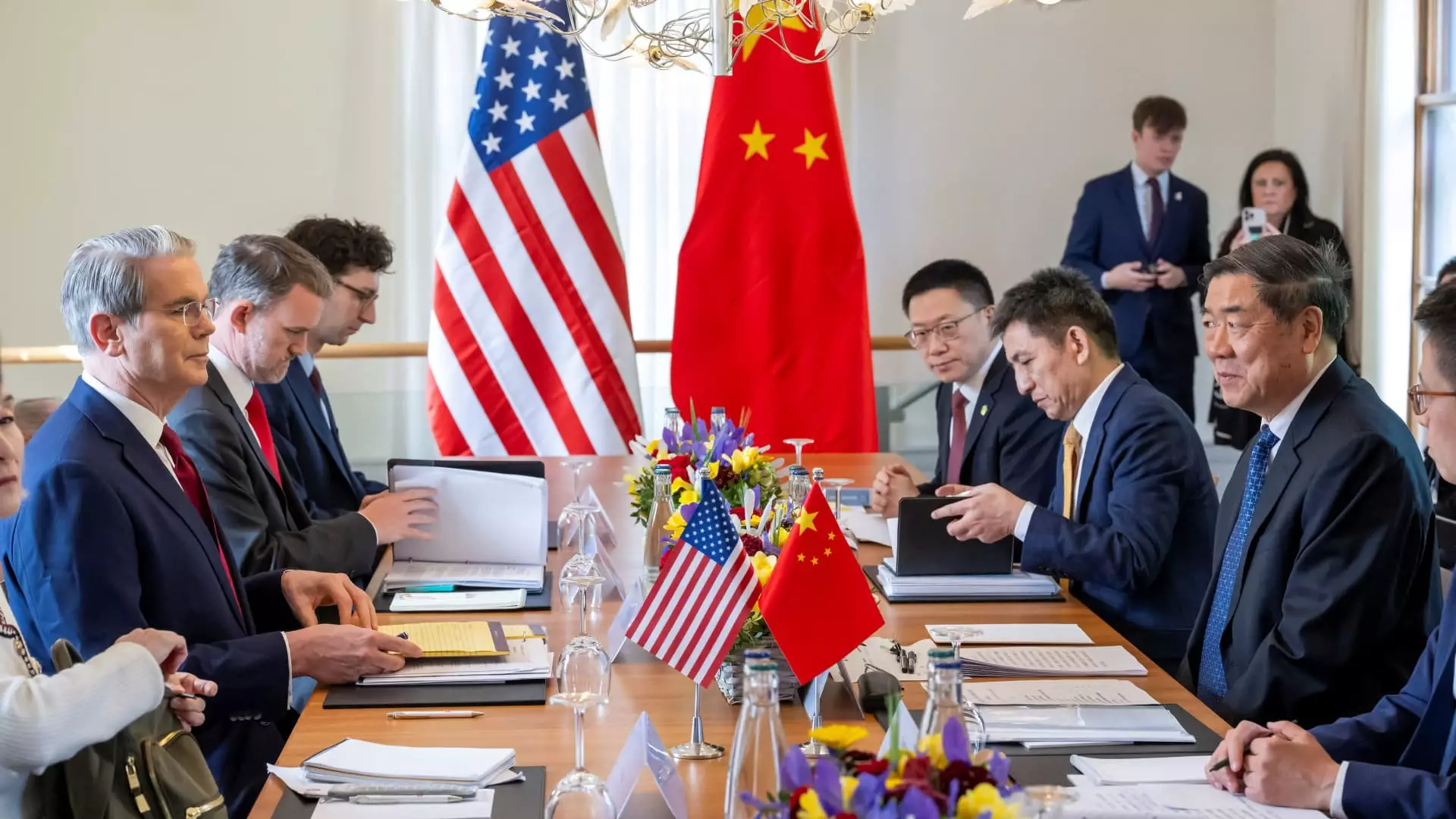The geopolitical chess match between the United States and China has taken a fresh jab, with the U.S. accusing China of deploying technology that is allegedly in violation of export controls. The crux of this confrontation revolves around Chinese tech giant Huawei and its chips, which the U.S. Commerce Department has highlighted as potentially hazardous. This situation doesn’t just highlight the fragile nature of international trade agreements; it underscores a more profound rift between the two economic titans. Trade disputes are often mere quarrels over tariffs or market access, but this time, technology entwines deeply with national security—a factor that complicates the dialogue and invites fear mongering on all sides.
Accusations and Counterclaims
China’s response to America’s latest demands is assertive, with officials decrying the U.S. stance as both “discriminatory” and “market distorting.” It’s an intriguing strategy from Beijing, trying to position itself as the aggrieved party, but that ignores a crucial reality: the chips in question are indeed mired in questions of security compliance. This sets the stage for a remarkable irony: as the U.S. pursues what it sees as a protective measure, China accuses it of unilateral bullying and market manipulation. It poses the question of just who is being protective and who is being aggressive—an age-old narrative in international relations.
The Fallout on Global Supply Chains
What is abundantly clear is the massive ramifications that these tensions have on global semiconductor supply chains. The semiconductor industry is the backbone of modern technological innovation, and any disruption can send ripples through not just national economies but global markets. China’s warnings about the U.S. choking the lifeblood of technological progress ring somewhat true; unilateral decisions by one nation can create an international domino effect. It hints at a paradox where the very actions the U.S. is taking to assert its dominance might inadvertently cripple its competitive edge, surrendering the high ground to Beijing.
Power Play or Self-Sabotage?
President Trump’s administration views tariffs as a legitimate tool for negotiation. Slashing tariff rates from 145% to 30%, while signaling possible increases if terms are not met, should have been a calculated move towards a viable resolution. Yet, with the U.S. simultaneously warning against specific Chinese chips, it creates a huge question mark: where will this path ultimately lead? In a truly globalized economy, where interdependence reigns, it would be naive to assume that America can bully its way into a favorable deal without inciting a backlash—both economically and diplomatically.
A Dangerous Precedent
As the U.S. clings to its narrative of national security and economic independence, one must ponder the implications of such a stance on global liberal economic policies. This situation may indeed set a dangerous precedent, facilitating an environment rife with protectionism. By employing unilateral sanctions or warnings against specific countries and their industries, the U.S. risks alienating not just China but also its allies. The pot of global innovation, after all, depends on multiple nations sharing knowledge, technology, and resources—an ideal under constant threat amid escalating tensions.
The Eye of the Beholder
As rhetoric mounts and mistrust deepens, it leads to the sobering realization that the trade war is about more than just chips and tariffs; it’s a clash between ideologies. The way this situation plays out isn’t merely a footnote in economic history; it could become a defining moment that shapes the landscape of global trade and diplomacy for generations. The essence of a potential agreement hangs in the balance, as both nations grapple with their identities on the world stage. Regrettably, as both sides dig their heels in, the likelihood of finding common ground diminishes, risking not just economic strife but also the fragile fabric of international relations itself.

Leave a Reply